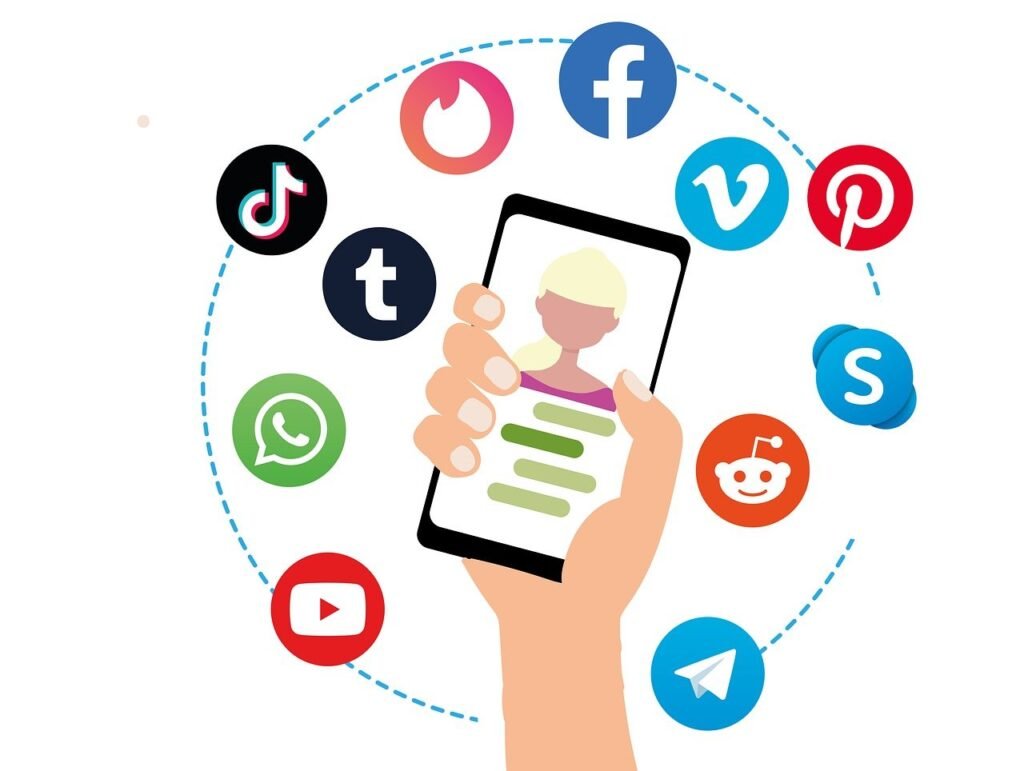
What You Need to Know About Using Social Media Emojis: A Friendly Guide for Website & Email Content
Not that many years back, the entire concept of emojis was very new. Its travel from a page on Ugradslife.com near MovableType v3.0 to the lives of those who are early adopters of social media and texting is a sign of a new area.

These cute little smileys were first explored-in 1999 when Shigetaka Kurita designed them for a mobile network in Japan, but they have grown incredibly in terms of the last decade of particularly chosen reference. Today in 2010, from there on, they have since begun to be categorized as mainstream essentials for promoting self-expression online. But using them can be difficult-to find sweets while you development messages for social media or email campaigns. Exposure of thoughtful and effective use, though, can truly immeasurably alter the face of brands.
Everyone should know these items much better if they want to know how to make use of the tiny visual-graphic in sites on social media and email very deliberately and insightfully to give something very fresh, fun and easy-to-understand.
The Importance of Emojis in Social Media Today
Emojis aren’t mere simple visual indicators of joy; they play a role in marketing. With more than half of individuals opting in 51% of cases to thinner involvement for content’s emojis, the face with tears is a last component. Emojis are a great way to build the brand personality; but they should follow a strategy.
Emojis help when they are used effectively:
Enhance the emotional approach of your brand: Emojis make the message more human, open, and authentic.
Convey emotions in a more concrete way: By merely written words, it does not convey all the nuances of human emotions, and emojis can handle that.
Make your content more accessible: Emojis help break lengthy scrolls and keep your ad’s engagement alive.
Balancing the Art of Emoji Use on Social Media
Emojis can sometimes be some of the most effective tools around; just as important, they should be infused in moderation. While they are utilized to add character and personality to your posts with exciting visual elements, too much usage only serves in bewildering or detracting from the overall messages.
Let me help you understand how to maintain a proper balance.
Check your tone: Your emojis have to match the tone shown in your writing. Is it a “professional” or a “casual” tone? For a super-fun Instagram post, like a welcoming heart emoji ❤, but not entirely pleasant enough in any official update LinkedIn.
Don’t stuff it: excess of emojis usually makes the message look full and perplexing. Stick to not more than three emojis per message.
Let the words remain words: Emojis should be additional to the message and not take the role of the message. Keep the text very clear and to the point and use emojis as complementary ads.
Understand your Audience: Different age groups use emojis differently: a Generation Z might feel something when they see a fire 🔥, but then an emoji on its own may mean more excitement for a Millennial 👍. You should consider how your audience perceives these icons if you are using them to pass a message.
Accessible Adoption of Emojis
Using emojis is important to remember that all users do not interpret them in the same way. For individuals who are visually impaired, who are neurodivergent, or who are color-blind, these little lumps occasionally become access barriers.
Here are a few tips making your posts more inclusive:
Do not use emojis that depend too specially on colors: colors are hard to differentiate for users on the basis of color blindness. Rather, let emojis express their meaning through color. The lesser the hues, the eyeball will roll over the emoji until it fits in better.
Use alt-text: The blind will “see” through screen readers with an alt-text description of what a post contains. Therefore, its importance remains to explain the right impression and then to assign and define that of an emoji.
Limit how many times you use a single emoji: Having too many emojis may muddle everybody’s capacity to read messages. May be simple but clear. Transmission over one subject should be equally clear for all.
The Top Platforms Where Emojis Really Do Their Best
Certain social media get an edge when it comes to the integration of emojis into the context. Here is where emojis sparkle beautifully:
Instagram: Here, emojis just do the magic. Such platforms can beam brightness onto the world of a user with a caption or story while the images and videos illuminate it.
Facebook & Y (formerly known as Twitter): Emojis help punctuate posts and keep articles light and fun.
TikTok: Use a lot of emotes to bring this kind of sarcasm into your captions and video descriptions, particularly for Generation Zs.
For Emails: “Just using emojis in your email subject lines can increase open rate,” the author shares. “But be cautious – dipping into emojis too early in a series (in a welcome email) can really set off a message.” Stick to using them once your audience has become accustomed to your brand.
Top emojis tips for content creators
Here are simple tips for the best use of your emojis:
Do not substitute text with emojis: Your emojis must compliment, not replace, your message; make your key message clear even leaving them out.
Put an emoji at the end of all your sentences; this way your audience will read your copy first and then there is the fun element of spotting the emoji way at the end of the sentence, which does not disrupt the flow.
Use wide, universally recognized emojis: Get only the well-known ones, and easy-read ones too, so they do not distract from the content (see example photos in the appended explanation).
Avoid too many emojis: Don’t use very many emojis in your post; just a few will work, and you get a maximum number of four per post rule in most cases.
Different platforms mean different emojis would appear differently on different devices. Make sure to test all of your content to make sure it shows well on all devices.
Emojis for email marketing
For the email marketer, emojis are game-changers, opening up new doors for pure digits and enhanced engagement. But they would be very moderate in use. Here’s how:
Limit the use of emojis: One or two emojis in the subject line or body could always do it. Anything more will be just overdoing it.
Know the timing: If you send fun or casual e-mails from time to time, feel free to attach emojis to them; however, refrain from using them in the very first email you send to a new subscriber. Otherwise, it might seem a little imprecise or random.
The Best Emojis for Social Media
Below is the short list of popular emojis that could improve your social media contents:
😂 – Laughing Face with Tears (amusement)
❤️ – Red Heart (love or affection)
👍 – Thumbs Up (approval)
🔥 – Fire (something hot or exciting)
🎉 – Party Popper (celebration)
😱 – Face Screaming in Fear (surprise or shock)
Mix and match these emojis with the content, and give your tweets some real fizz!
Ending with a Bang: How to Best Utilize Emojis
Emojis can really pack some power in your social media marketing and email arsenal. When used correctly, they can move your message to higher heights of audience engagement and audience access. Just be keen on where and when you use them to have utmost impact; you can always look for balance and accessibility. Otherwise, you can create a sensitive environment for your audience.
Using best practices to implement these guidelines and beef up your content with a dash of personality should guide you towards mastering emoji use.
Try out these tips and include them in your next post or email. Incorporating a bit of imagination and care is essential for turning emojis into a strategically important tool for building your brand in the digital realm.



